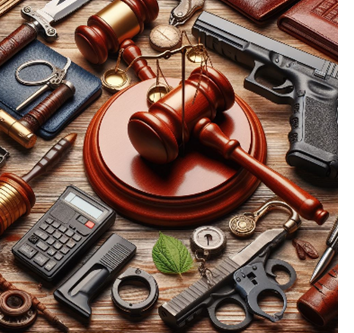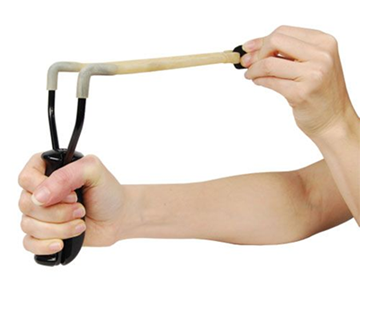Understanding the Legal Implications of Using Self-Defense Tools
 In a world where personal safety is a growing concern, individuals often turn to self-defense tools to provide an added layer of protection. From pepper sprays to stun guns and even firearms, these tools are designed to empower people to safeguard themselves in times of danger. However, the use of self-defense tools comes with a set of legal implications that individuals must thoroughly understand to avoid unintended consequences. This blog post delves into the legal aspects surrounding the use of self-defense tools, shedding light on the fine line between protection and prosecution.
In a world where personal safety is a growing concern, individuals often turn to self-defense tools to provide an added layer of protection. From pepper sprays to stun guns and even firearms, these tools are designed to empower people to safeguard themselves in times of danger. However, the use of self-defense tools comes with a set of legal implications that individuals must thoroughly understand to avoid unintended consequences. This blog post delves into the legal aspects surrounding the use of self-defense tools, shedding light on the fine line between protection and prosecution.
I. The Right to Self-Defense: A Legal Foundation
The right to self-defense is deeply rooted in legal systems around the world. Generally, individuals have the right to use force, even lethal force, to protect themselves or others from imminent harm. This principle forms the basis for the legality of self-defense tools. However, the application of this right is not without limitations and is subject to specific conditions that vary across jurisdictions.
A. Justifiable Use of Force
Understanding the justifiable use of force is crucial for anyone relying on self-defense tools. Most legal systems distinguish between three main types of force: reasonable force, deadly force, and excessive force. These distinctions often hinge on the level of threat faced by the individual.
-
Reasonable Force: This refers to the use of non-deadly force that is deemed necessary to protect oneself or others from imminent harm. It is generally accepted under self-defense laws, but the degree of force considered reasonable can vary.
-
Deadly Force: The use of force that is likely to cause serious bodily harm or death falls under the category of deadly force. While it may be justifiable in certain situations, the conditions under which deadly force is allowed can be strict and depend on the level of threat faced.
-
Excessive Force: Any force beyond what is deemed reasonable or necessary is considered excessive. This can lead to legal consequences for individuals using self-defense tools improperly.
B. Imminent Threat and Proportionality
For self-defense to be legally justifiable, there must be an imminent threat of harm. This means that individuals cannot use force preemptively but must wait until they reasonably believe that an attack is imminent. Additionally, the use of force must be proportional to the threat faced. Using deadly force in response to a non-lethal threat, for instance, may not be legally justified.
II. Legal Variations: Jurisdictional Differences
One of the most critical aspects of understanding the legal implications of self-defense tools is recognizing the variations in laws across different jurisdictions. Laws regarding self-defense can differ significantly from one country to another, and even within the same country, state or regional laws may vary. It is imperative for individuals to be aware of and adhere to the specific legal requirements of their location to avoid potential legal consequences.
A. Stand Your Ground vs. Duty to Retreat
The legal concept of "stand your ground" and "duty to retreat" illustrates the divergent approaches taken by different jurisdictions regarding self-defense.
-
Stand Your Ground: In jurisdictions with "stand your ground" laws, individuals are not legally obligated to retreat from a threat before using force, even lethal force. This principle empowers individuals to stand their ground and defend themselves without the need to assess escape routes.
-
Duty to Retreat: Conversely, some jurisdictions adhere to the "duty to retreat" principle, which requires individuals to make reasonable attempts to avoid confrontation before resorting to the use of force. Failure to do so may result in legal consequences, even if the force used was otherwise justifiable.
B. Firearm Regulations
While the right to bear arms is protected in some jurisdictions, others impose strict regulations on firearm ownership and use. Understanding the specific firearm laws in one's jurisdiction is paramount for individuals considering firearms as self-defense tools. This includes obtaining the necessary permits, adhering to storage requirements, and complying with restrictions on carrying firearms in public spaces.
III. Common Self-Defense Tools and Their Legal Status
A. Pepper Spray
Pepper spray is a popular non-lethal self-defense tool known for its effectiveness in incapacitating attackers temporarily. However, its legal status varies widely. Some jurisdictions allow the open carry of pepper spray without restrictions, while others may regulate its size, concentration, or even prohibit its possession entirely. It is crucial for individuals to research and adhere to local regulations regarding pepper spray to avoid legal repercussions.
B. Stun Guns and Tasers
Stun guns and Tasers are electronic devices designed to immobilize attackers by delivering an electric shock. The legality of these self-defense tools can be complex. While some jurisdictions permit their use for self-defense, others classify them as weapons and impose restrictions on their possession or use. Understanding the specific regulations governing stun guns and Tasers in one's area is essential to avoid legal complications.
C. Batons and Expandable Batons
Batons, including expandable batons, are compact and easily concealable self-defense tools. However, their legality varies widely, with some jurisdictions allowing their possession for self-defense purposes and others prohibiting them outright. Individuals must be aware of local laws regarding the use and carry of batons to avoid legal issues.
IV. Legal Consequences of Misuse
Despite the intention of self-defense tools to enhance personal safety, their misuse can lead to severe legal consequences. Individuals who use force excessively, without a justifiable reason, or in violation of specific legal restrictions may find themselves facing criminal charges. Understanding the potential legal consequences of misusing self-defense tools is essential for individuals seeking to protect themselves within the bounds of the law.
A. Assault Charges
Using force that goes beyond the limits of justifiable self-defense may result in assault charges. Whether the force used is non-deadly or deadly, individuals can be held criminally liable for assault if their actions are deemed unjustified or excessive.
B. Manslaughter and Homicide Charges
In cases where deadly force is used, individuals may face manslaughter or homicide charges if the circumstances do not align with legal requirements for justifiable self-defense. It is critical to understand the legal thresholds for using deadly force to avoid unintentionally committing a criminal offense.
C. Civil Liability
In addition to criminal charges, individuals may also be subject to civil liability if they injure or harm others while using self-defense tools. Civil lawsuits for damages can arise if it is determined that the use of force was unwarranted or exceeded the bounds of self-defense.
Conclusion:
While self-defense tools offer individuals a means to enhance their personal safety, the legal implications of their use cannot be overstated. Understanding the intricate balance between protection and prosecution is essential for anyone relying on these tools. By being aware of the legal principles governing self-defense, recognizing jurisdictional differences, and comprehending the potential consequences of misuse, individuals can navigate the legal landscape more effectively. Ultimately, the goal is to empower individuals to protect themselves within the confines of the law, fostering a safer society that values both personal safety and legal responsibility.




























